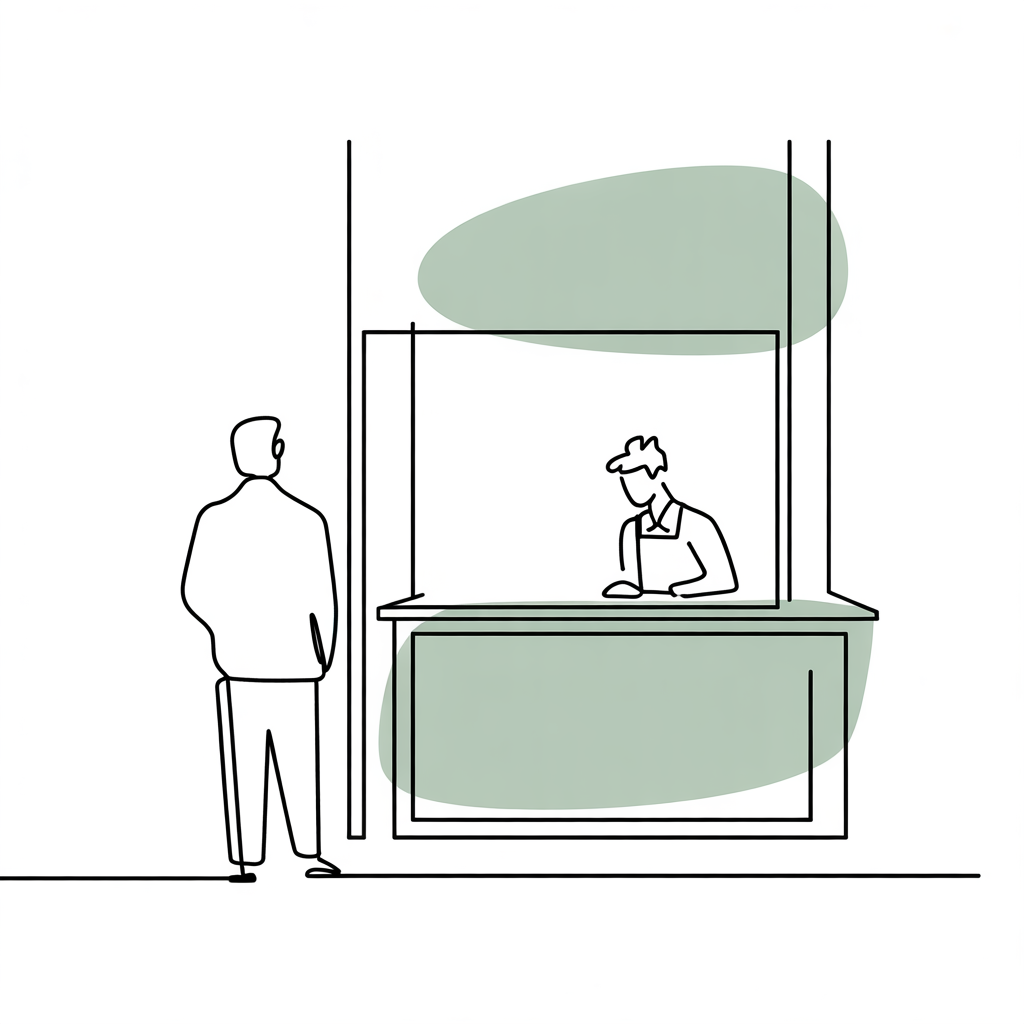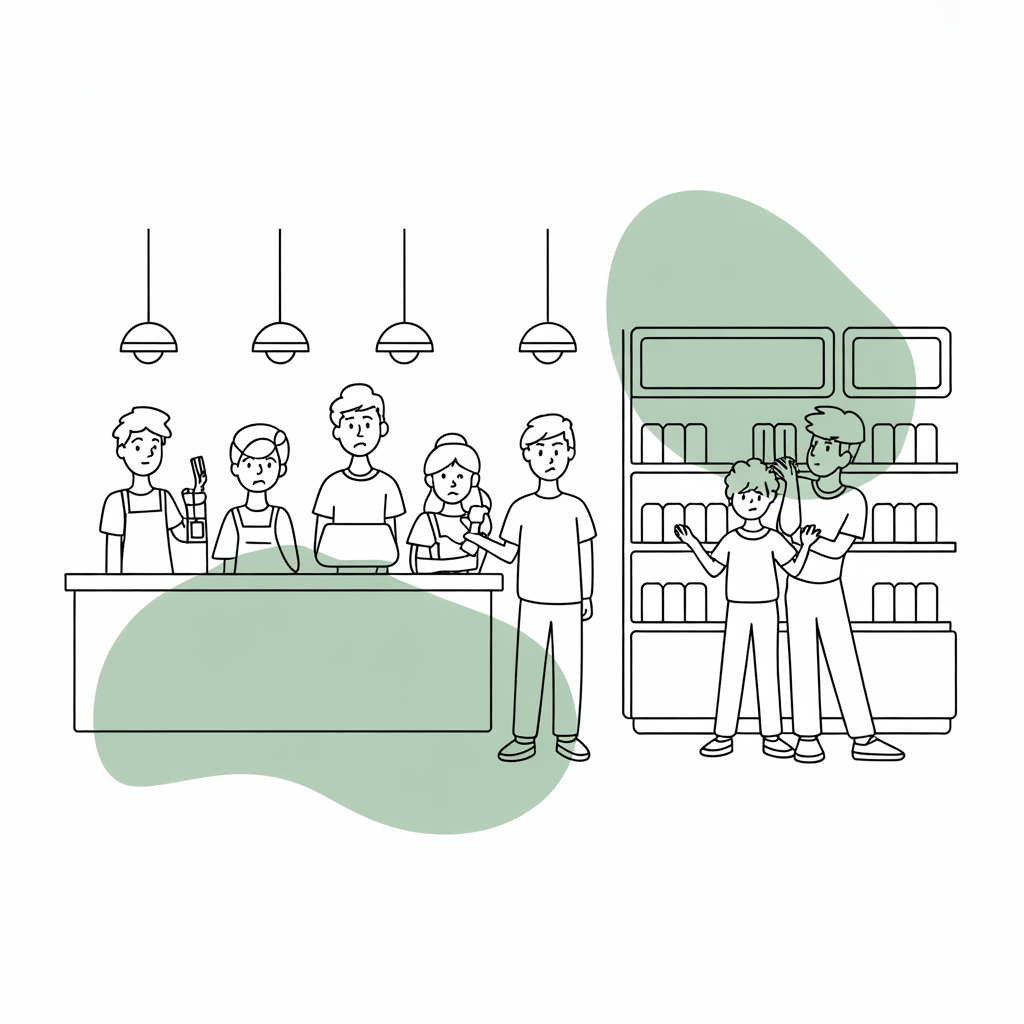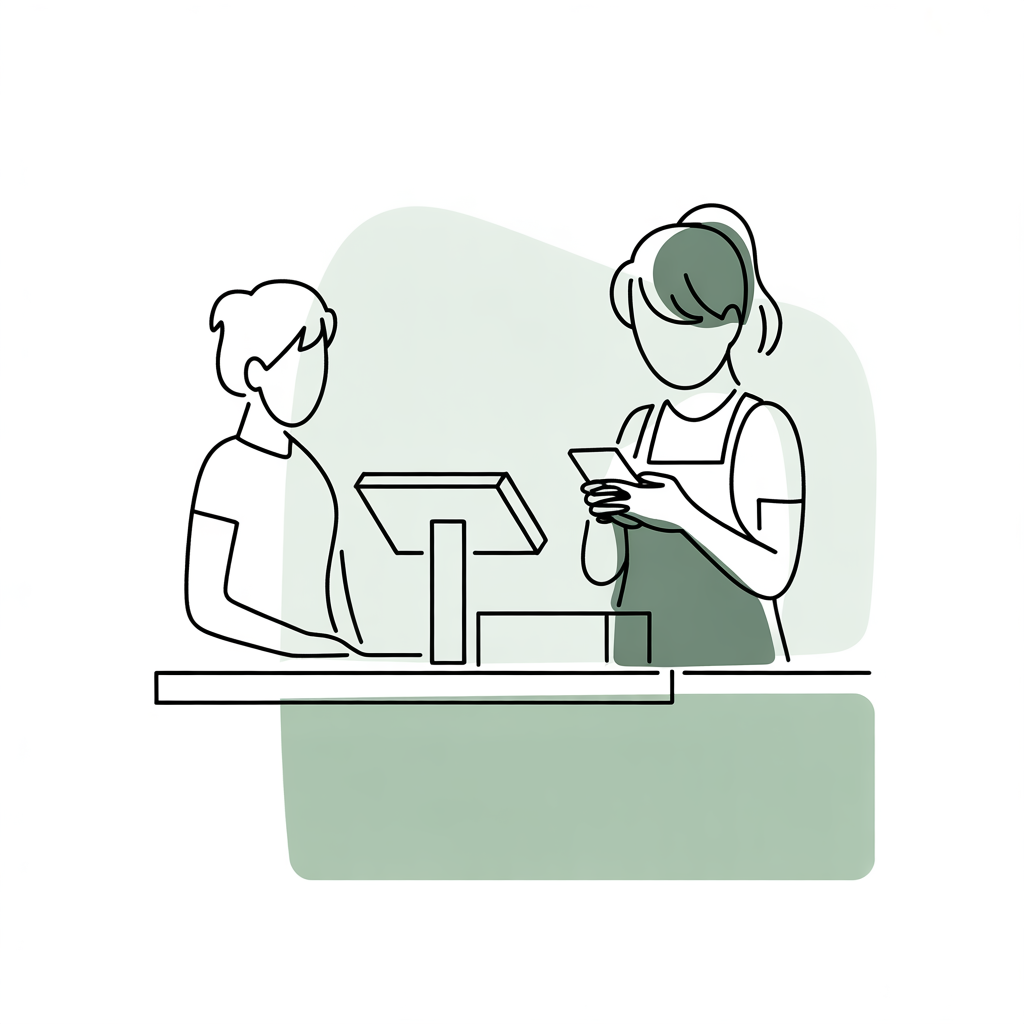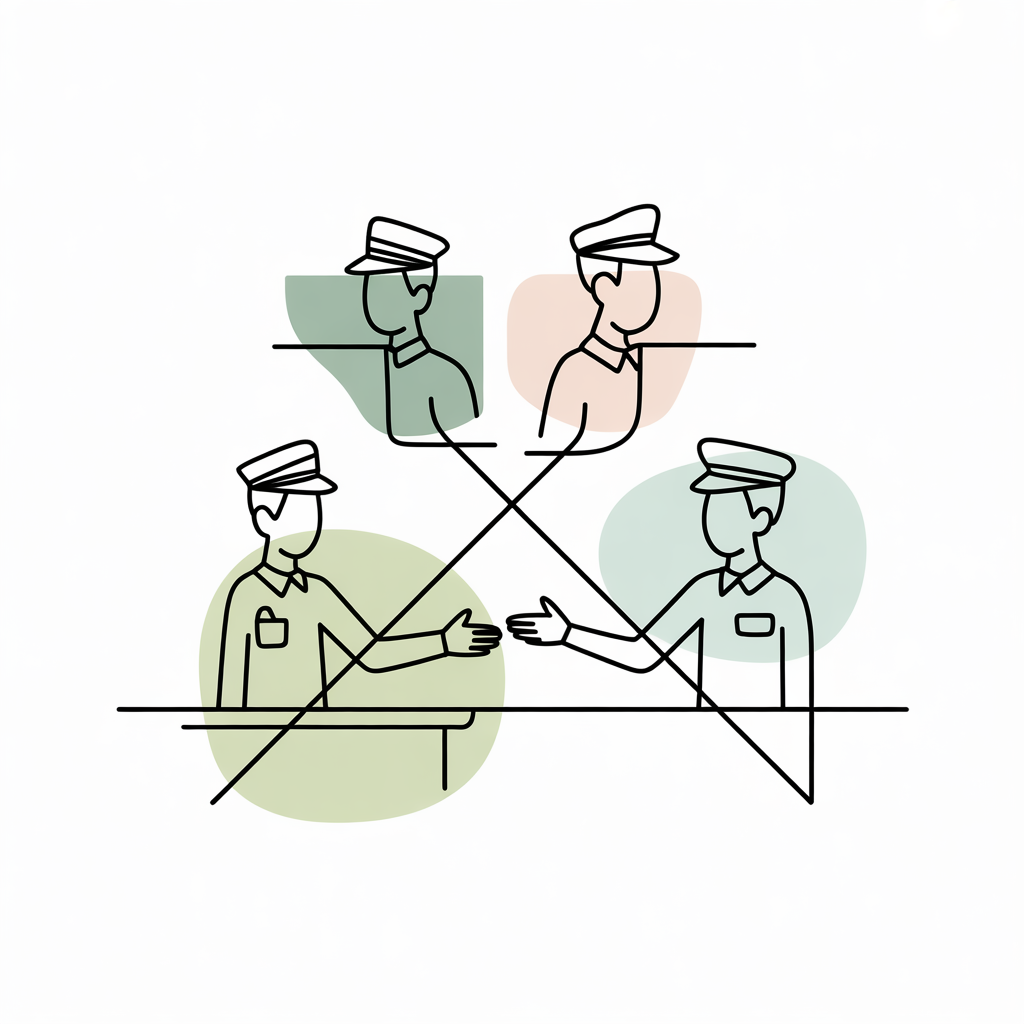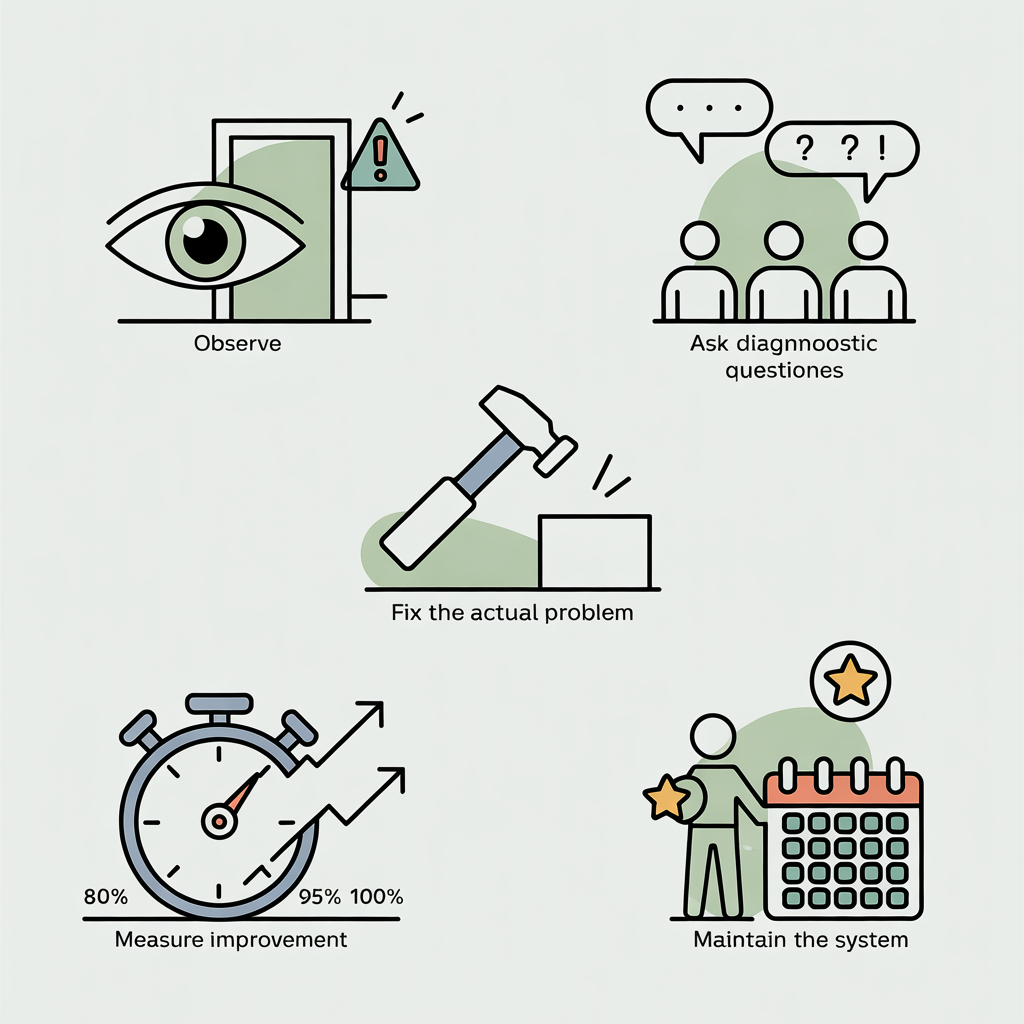Why Your Team Won’t Acknowledge Guests at the Door.
I've walked into dozens of fast casual spots, QSRs, and casual dining places where the same scene plays out: guests standing at the entrance, employees behind the counter or moving through the dining room, and nobody making eye contact. The reviews tell the story: "Stood at the counter for 10 minutes." "Three people walked right past us." "Nobody even said hi."
When this problem comes up, operators always say some version of: "I've told them a hundred times to greet people. They just don't listen."
Here's what I've learned: when your team isn't greeting guests, "telling them harder" never works. Because "my staff doesn't greet guests" isn't the problem—it's a symptom.
The real issue? One of six specific breakdowns is happening in your operation. Fixing greeting failures starts with diagnosis, not more training or stricter rules. Which of the six breakdowns are you dealing with? Because each one needs a completely different fix.
Let me break down how to diagnose and solve each one.
The Diagnostic Framework: Six Failure Points
Look, across fast casual, QSR, and casual dining operations, there are six distinct breakdowns that kill greeting performance. The fix isn't retraining the whole crew or rolling out a new policy. It's watching which specific breakdown is happening.
Once you know the root cause, the fix becomes obvious. Here's how to break down each one.
1. The Awareness Problem: They Never Saw the Guest Enter
The Diagnostic Question: Are employees positioned and attentive to see or hear guests entering?
What This Looks Like
In probably 40% of operations I've seen, the greeting failure isn't about attitude or training. Your team genuinely doesn't know a guest entered.
The cashier is facing the register screen, not the door. Your line cooks are on the line. Your crew is restocking in the back. When the door opens, nobody's sight line includes the entrance. They're not ignoring guests—they legitimately don't know anyone walked in.
The other pattern? Noise masking. In busy fast casual or QSR environments, a door opening doesn't cut through the ambient sound. No alert system, just guests appearing while the team works unaware.
How to Fix It
First, fix the physical setup. Position the front counter or greeting station so there's an unobstructed view of the entrance. If the current layout doesn't allow this, move things around. If there's no designated greeting position, create one.
"Somebody watch the door" doesn't work. During rushes when the main greeter is helping elsewhere, assign specific door coverage: "Maria, you're on door for the next 15 minutes while Josh is on drive-through." Specific names, specific windows.
Second, install an entry alert. A simple door chime eliminates the awareness problem in loud environments. Battery-powered entry alerts run about $20. Train the crew that the chime means someone immediately scans the entrance.
Third, establish sight-line habits. Any front-of-house employee should maintain a sight line to the entrance at least every 30 seconds. Build this into training and manager walk-throughs.
Test it yourself. Walk in at different times and clock how long it takes for someone to make eye contact. If it's more than 15 seconds, you've still got a positioning issue.
2. The Ignorance Problem: They Don't Know They're Supposed To
The Diagnostic Question: Do employees understand greeting guests is a required duty?
What This Looks Like
This one surprises operators every time. They'll say, "Everyone knows you're supposed to greet guests." But when you talk to the crew, you find out quickly: no, they don't.
New hires from retail who thought only the cashier greets. Teenagers in their first job who had zero clue about service standards. Even experienced fast food workers who came from spots where greeting was strictly one person's job.
When greeting isn't explicitly stated as an expectation, your team fills the gap with assumptions. And the most common assumption? "That's not my job."
How to Fix It
First, make it explicit in writing. Update employee handbooks, job descriptions, and training docs with clear language: "Every front-of-house team member is responsible for acknowledging guests within 15 seconds of entry, regardless of their position or current task."
Not vague language about "great customer service." A clear, specific requirement with a measurable standard.
Second, build it into day-one training. Before new hires learn the register or the menu, they hear this: "At this spot, every guest who walks through that door gets acknowledged immediately. If you see a guest enter and nobody's greeted them yet, that's your job. Even if you're working expo and we have someone on register. Even if you're carrying food. You make eye contact, you smile, and you say 'I'll be right with you' at minimum."
Third, integrate it into pre-shift huddles. Include a reminder in every pre-shift: "Remember, everyone's responsible for greeting. If you see a guest standing there unacknowledged, you acknowledge them."
The ignorance problem is the easiest to fix and the most embarrassing to overlook. Never assume your crew knows something this basic.
3. The Skills Problem: They Don't Know How or When
The Diagnostic Question: Have employees been shown what a proper greeting looks and sounds like, and when it should occur?
What This Looks Like
Your crew knows they should greet guests, but they have zero clue what that actually means in practice.
Does greeting mean eye contact from behind the counter? A wave? Walking over? What exact words? Can they greet while bagging an order or do they stop everything?
When should it happen? The instant the door opens? When the guest reaches the counter? What if there's already a line?
Without specific training on the how and when, your team improvises. And their improvisation is usually weak, inconsistent, or awkward. So they avoid it entirely.
How to Fix It
First, script the greeting. Not to make it robotic, but to give your crew a clear framework:
Immediate acknowledgment (within 15 seconds): Eye contact + smile + verbal acknowledgment
Standard greeting (within 30 seconds): "Hey! Welcome in, I'll be right with you" or "Welcome! Someone will grab your order in just a sec"
If register person is busy: "Welcome! Let me grab someone to help you" then immediately get the shift lead or another team member
Second, demonstrate it physically. During training, literally practice this. Walk through the door and have the trainer model the response. Then the trainee practices. Multiple times. With different scenarios.
"Here's what it looks like when you're on register and someone enters." "Here's what it looks like when you're making drinks and a new guest arrives." "Here's what it looks like when you're on drive-through and someone walks in."
Third, set measurable timing standards:
Eye contact and acknowledgment: 15 seconds max
Verbal greeting: 30 seconds max
Physical approach (if needed): 45 seconds max
These aren't suggestions—they're measurable standards to observe, coach to, and hold people accountable for.
Fourth, role-play the tough scenarios. What do you say when you're bagging food and someone enters? "Welcome! I'll be right with you as soon as I finish this order!" What about when there's already a line? "Hey folks! Just so you know, we're running about 5 minutes behind. Thanks for your patience!"
What looks like a motivation problem is usually a skills problem. Before assuming someone doesn't care, check: Have they actually been shown what good looks like?
4. The Consequence Problem: They Chose Not To
The Diagnostic Question: Are clear, consistent consequences applied for greeting behaviors?
What This Looks Like
This is where most operators get stuck. The crew knows guests should be greeted. They know how to greet. They just don't, because nothing happens when they don't.
Maria's standing at the register scrolling her phone while a guest waits. What happens when you see that? If the answer is "nothing" or "I'll talk to her later," you don't have a greeting problem. You have an accountability problem.
Your team is rational. They do what gets rewarded and avoid what gets punished. If greeting guests is labeled "important" but failing to greet has zero consequence, while checking their phone feels good in the moment, they'll check their phone every time.
How to Fix It
First, set up observation and documentation. You can't hold people accountable for behavior you don't measure. Establish regular entrance monitoring during shifts and factual documentation when greetings don't happen.
Simple tracking: "Thursday 6:15pm - Guest entered, stood for 40 seconds unacknowledged, Maria on register on phone." Not emotional, not judgmental. Just observable facts.
Second, address first fails immediately. When a missed greeting is observed, address it right away but privately. "Hey Maria, I just saw a guest stand at the door for about 45 seconds. You were on your phone. What happened?"
Listen to the response, then restate the expectation: "Every guest gets acknowledged within 15 seconds. Phone goes away during your shift unless it's a genuine emergency. Can you commit to that?"
Third, implement progressive consequences for repeat failures.
Second time: Written warning with documented coaching. "This is the second time we've addressed greeting failures. Here's what needs to change, here's how we'll measure it, here's what happens if it continues."
Third time: Schedule reduction or position change. "You've been coached twice on greeting and it's still not happening. We're cutting your register shifts to one per week while we see improvement, or we're moving you to back-of-house."
Fourth time: Termination. "Greeting guests is a core requirement of this position. We've provided training, coaching, and opportunities to improve. This isn't working out."
Fourth, balance this with positive reinforcement. When someone does it right in tough circumstances, point it out immediately. "Carlos, I saw you greeting that family while you were bagging orders. That's exactly what we need. Good work."
Big Point: This is where most operators fail. They want the greeting to happen, but they're unwilling to enforce it. If you're not willing to move someone out of a position when they consistently refuse to acknowledge guests, you're telling your entire crew that greeting is optional.
5. The Priority Problem: They Were Busy
The Diagnostic Question: Were employees already engaged with another task or guest when the new guest entered?
What This Looks Like
This is the most legit failure mode. The cashier is taking an order. Someone's making drinks. Another person is bagging food. A new guest enters. They see the guest, they know they should greet, but they're genuinely occupied with another responsibility.
The issue isn't lack of care. It's lack of a system for managing conflicting priorities. Without a clear protocol, your crew makes individual judgment calls: "Is it more rude to interrupt this order or to not greet the new person?" They guess. Often they guess wrong. The result: guests feel ignored.
How to Fix It
First, create a hierarchy of priorities and train to it explicitly:
Priority 1: Acknowledge every new arrival within 15 seconds (even if you can't fully serve them yet) Priority 2: Attend to guests already being served Priority 3: Everything else
This means if you're taking an order and someone enters, you say to the guest you're serving: "One sec," turn to the new arrival and say "Hey! Be right with you," then return to the order. Total time: 5 seconds.
If you're making drinks and someone new enters, you make eye contact with the new guest, smile, and gesture "one moment" or call out "Be right there," then finish the drinks.
Second, script the bridging language. Give crews the exact words to use when they're occupied:
"Welcome! I'll be with you in about two minutes."
"Hey! Let me just finish this order and I'll grab you."
"Welcome in! Give me one sec."
Third, implement a backup system. When multiple guests arrive at once or during rushes, train every front-of-house person to help:
Expo crew acknowledges guests even if they can't take orders
Back-line people make eye contact and say "Someone will be right with you"
Shift leads greet guests when they're visible from wherever they're working
Also designate a "second responder" during busy periods: "When the main register is taking an order, Jess, you watch the door for new arrivals and give them the 15-second acknowledgment."
Fourth, manage expectations during the acknowledgment itself. Even during a rush, a guest who's been acknowledged and told "It'll be about 5 minutes" will wait way more patiently than a guest who's been ignored for 30 seconds.
The priority problem gets solved by making acknowledgment the highest priority and giving people the tools to deliver it without abandoning other guests.
6. The Contradiction Problem: They Were Told Not To
The Diagnostic Question: Have any managers or leads instructed staff not to greet guests or to defer it to others?
What This Looks Like
This is the most insidious pattern because it's invisible to the operator. You've set the expectation that everyone greets. You've trained the behavior. You're holding people accountable. Yet greetings still aren't happening consistently.
Dig deeper and you'll often find one of your shift leads or managers is contradicting you.
"Don't worry about the door, that's the cashier's job." "Focus on your station, let the front counter handle greeting." "You don't need to say hi to people coming in, we have someone for that."
Sometimes it's well-intentioned—a manager trying to keep crew focused on their tasks. Sometimes it's territorial—a shift lead who doesn't want others "doing their job." Either way, the front-line crew is getting conflicting instructions. When that happens, they default to whoever's on duty in the moment. Your standard becomes meaningless.
How to Fix It
First, align the leadership team. Before working with front-line crew on greeting standards, get every manager, shift lead, and supervisor aligned.
Have a straight conversation: "Our standard is that every front-of-house person acknowledges guests within 15 seconds of entry, regardless of their primary position. This is not optional. This is not the cashier's job exclusively. This is everyone's job. Are we all on the same page?"
Get verbal commitment: "Are you willing to coach to this standard? Are you willing to correct people when they don't do it?"
Second, listen for contradictions. Pay close attention to what managers and leads are saying to crew. Are they reinforcing the standard or undermining it?
When you hear contradiction, address it right away in private: "Hey, I just heard you tell Maria not to worry about greeting. That contradicts our standard. Here's why greeting is everyone's responsibility. Can you commit to reinforcing that?"
Third, build it into manager accountability. Include greeting standards in manager training and performance reviews: "One of your core responsibilities is ensuring consistent guest acknowledgment. This means coaching your crew to the 15-second standard and modeling it yourself."
Fourth, if needed, frame enforcement as coming from leadership. If a manager is resistant: "I know it might seem like we're asking people to do too much, but this is a non-negotiable standard I'm setting. I need you to enforce it with me."
Big Point: The contradiction problem is why some spots never improve despite "trying everything." You're not fighting front-line resistance. You're fighting middle management contradiction. Fix the leadership layer before touching the front line.
How to Approach This: The Diagnostic Process
When greeting failures are happening, don't start with blanket retraining or new policies. Start by identifying which of these six breakdowns is actually happening.
Step 1: Observe. Spend time watching the entrance during different shifts. When failures happen, note the context.
Step 2: Ask diagnostic questions. Pull aside the crew members involved, not to call them out but to understand. "Did you see that guest enter?" "Do you know you're supposed to greet?" "What specifically should you say?" "What stopped you from greeting?" "Has anyone told you not to greet?"
Step 3: Fix the actual problem. Once you've identified the root cause, apply the targeted fix—whether that's repositioning, training, accountability systems, priority protocols, or leadership alignment.
Step 4: Measure improvement. Keep observing. Track greeting success rate. Are new arrivals acknowledged within 15 seconds? 80% of the time? 95%? 100%?
Step 5: Maintain the system. Greeting behaviors drift over time. Build ongoing reinforcement into your management routine—weekly observations, monthly refresher training, consistent accountability.
The Bottom Line
When operators ask "Why aren't my employees acknowledging guests?", the answer is never "because your crew is lazy or doesn't care."
It's because one of six specific systems failed—awareness, knowledge, skill, consequence, priority, or contradiction.
Your guests don't care why they were ignored. They just know they were. And they're not coming back.
The work is identifying which system broke down and fixing it. Because everything else in the guest experience depends on getting that first acknowledgment right.



